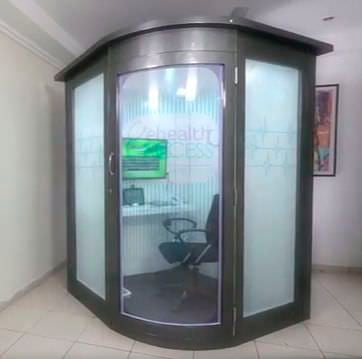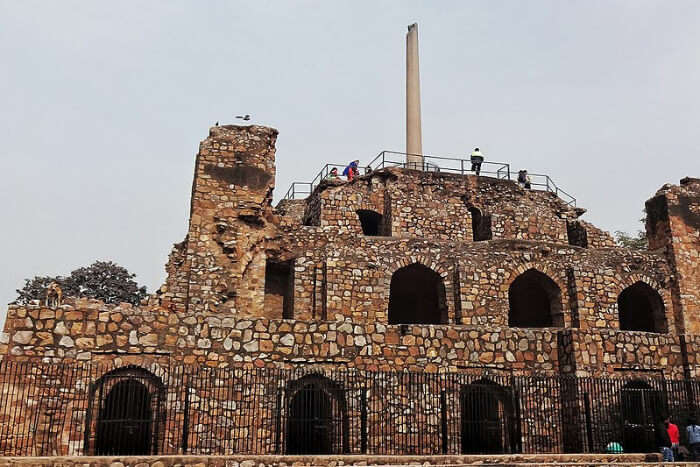Why use Metabase for blockchain analytics?
- How “real-time” do you need the dashboard to be? Lots of dashboard providers claim to be “real-time,” but most aren’t in the true sense of the word (updating when your data updates). And most of them that are tend to be quite costly. Do you need your dashboard to be updating minute-by-minute? Every time you sign-on? Every few hours?
- These real time dashboards are automatically updated and provide the user with instant access to critical data. Here we will present rich examples from various functions, industries, and platforms which you can use for your own dashboard building process, and generate actionable and real-time insights.
Here at Anyblock Analytics, we choose Metabase as our primary blockchain visualization tool because it enables business users to answer their questions themselves, rather to wait for precious developer time. This is possible because of the simple Metabase point and click editor so that no SQL query language needs to be used (but it can).
The only real drawback of IIS is it’s a closed Microsoft product, but that’s not necessarily a bad thing. With Microsoft behind it, there’s tons of support and resources backing IIS. Since 2010, Microsoft IIS has seen some massive improvements, which have led to its market share steadily increasing, from 21% in 2010 to 32% in 2014.
The other great feature is the ease of sharing Metabase blockchain dashboards publicly or with the respective shareholders. The link to do so is generated with two clicks and the graphs can just as easily be embedded into websites or users’ internal applications.
What is Metabase in general?
 (1).jpg)
“Metabase is an open source business intelligence tool. It lets you ask questions about your data, and displays answers in formats that make sense, whether that’s a bar graph or a detailed table.
Your questions can be saved for later, making it easy to come back to them, or you can group questions into great looking dashboards. Metabase also makes it easy to share questions and dashboards with the rest of your team.”

Source: Metabase Website
How to create a Metabase blockchain dashboard?
1. Start: Ask a question
2. Choose the way of asking your question
- Simple question is meant for simple requests of data (generally not really helpful with our blockchain data model)
- Customized questions are recommended if you want to easily filter and summarize your data (recommended for beginners / business users)
- Native Queries has to be written in SQL which requires at least basic knowledge in that language (recommended for advanced users / developers
3. Pick your “starting data” (meaning to choose our supported blockchain as the source, see our list of networks on our Network Status Page)
Hint: It is also possible to pick previous questions as data for your next question (Find them here: “Saved questions”)
4. Now you can start to filter, summarize and sort your data (the following screenshot shows the editor for customized question)
5. After you’ve picked your data, you are now able to visualize the results
6. Configure your visualization in different formats
Example: Blockchain analytics to create Metabase dashboard for The Energy Origin – TEO
At the beginning it is essential to be aware of
- what are the objectives of your dashboard,
- what you will require to build your dashboard,
- and how you will achieve these objectives.
The goal of the TEO dashboard was to provide a visualization of the events happening on the TEO smart contract and to analyze them as detailed as possible without knowing the source code or any documentation. General information about the project is available on the website of The Energy Origin – TEO.
The first step is to determine the blockchain on which the project runs. TEO uses the Energy Web Chain (EWC) of the Energy Web Foundation. The EWC is one of over 22 different blockchain in the Anyblock Index, which contains many public blockchains but is also available for enterprise consortia blockchains such as this one.
After the address of TEO had been identified, it is necessary to find out if the ABI for this address is available, as this represents the only way to be able to see what is happening. The Anyblock Index uses the contract’s ABI to translate the hexadecimal raw blockchain data into human-readable event names and formats numbers with the right decimal format.
Once the two requirements, address and ABI, are in place, all events taking place on TEO can now be analyzed and visualized.
Handbrake for mac 10.10. This custom question leads to the following diagram by visualizing the outcoming data.
After this time-series chart of all events is done, two fundamental questions immediately come to mind: What do these events represent and who are the addresses which are executing these events?
To answer this question, the next challenge is: How can the individual events be analyzed? This required decrypting the individual certificates of the events, which was only possible as a SQL question, as the parameters are saved in an array in our SQL blockchain data model:
Using this query, it was now possible to filter the number of unique addresses per event via Metabase. For example, it was possible to identify the unique addresses that send out events on TEO.
Finally, all events are shown in a time-series stacked line chart, and also the unique addresses behind the different events are displayed on the dashboard. The viewer is therefore provided with aggregated information about the entire timespan of the smart contract activity, and an additional table about the latest events on TEO provides real-time monitoring capabilities.
Our dashboards can just as easily include the possibility to drill-down on the data with filters.
This enables for example to limit the data shown in the dashboard to a certain interval of dates, show the activities of individual user addresses or check the status of certain transactions. You can find some examples for our interactive dashboards on our website.
We hope you found this little tutorial on blockchain data science with Metabase useful.

If you have any questions about blockchain analytics and data science in general, want to exchange some tricks working with Metabase or would like insights into a particular smart contract – we’d love to hear from you!
Looking to create an Anyblock account? Takes seconds and it's free!

>> You can also browse related posts below or go back to all posts.
Interested or questions?
Freddy Zwanzger
(Co-Founder & Chief Data Officer)
freddy@anyblockanalytics.com
+49 6131 3272372
Metabase Free
Related Posts
Real-time Subscriber
- Query Ethereum with SQL
You can now easily query the Ethereum blockchain using our Anyblock SQL database. Down to the smart contract event level, already enriched and decoded into human-readable text, and updated in real-time with the latest blocks from the Ethereum Mainnet and 22+ other blockchain networks.
- Why reading data from the Ethereum blockchain is hard and how to speed it up
What is the content of a blockchain and how are smart contract interactions in particular stored on Ethereum? Learn which factors make reading data from the blockchain difficult and how an ETL process gets it into a database for faster querying.
- How to Integrate Blockchain Analytics into Your Business Intelligence Tools
Join us as we explore the importance of business intelligence (BI) and how Blockchain analytics can deliver better insights and drive more powerful decisions. While Blockchain data may sound difficult to work with, our innovative technology makes it possible to bridge the gap between business and Blockchain data. With our help, using Blockchain data in enterprises is just as easy and straightforward as any other type of data.
Here's how to handle projects in Todoist: Create a new project for each multi-step project you identified as you were clarifying your tasks. Drag and drop the associated tasks from your Inbox to the appropriate project. Or click on a task and type '#' into the. As you think of other steps, add. How to use todoist. Getting Things Done (a.k.a. GTD) is a popular, five-step time-management method that’s based on the idea of getting everything out of your head and onto your to-do list. It reduces stress and forgetfulness by helping you focus on completing tasks rather than trying to remember them. Click here to read more about the GTD methodology.
